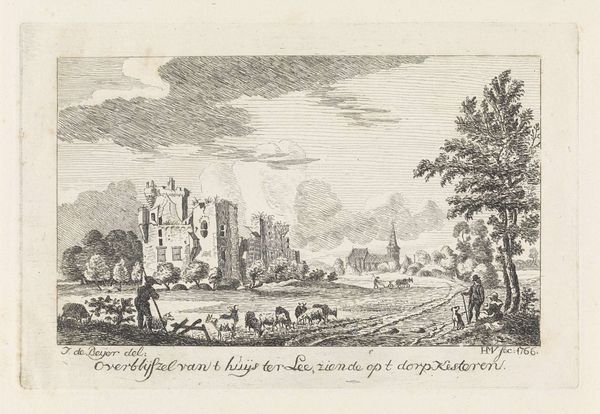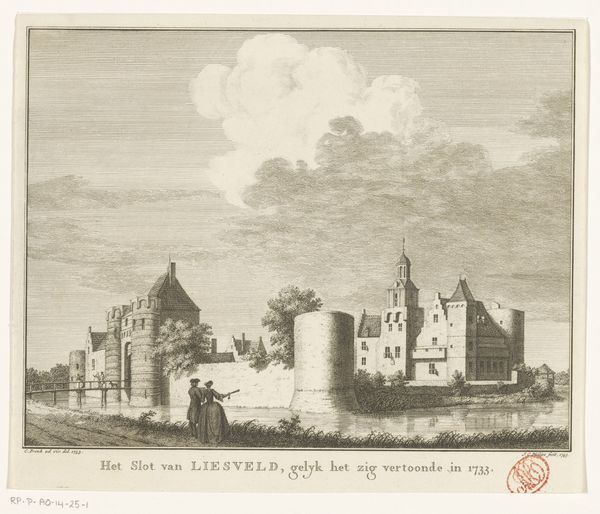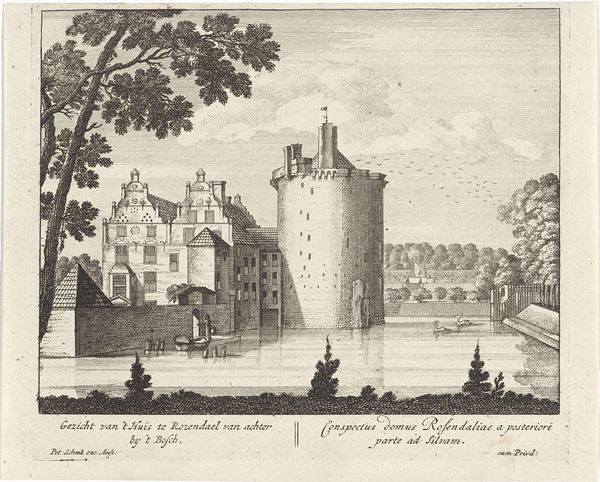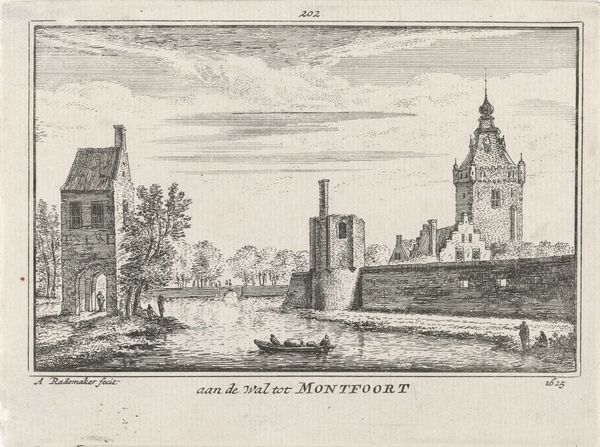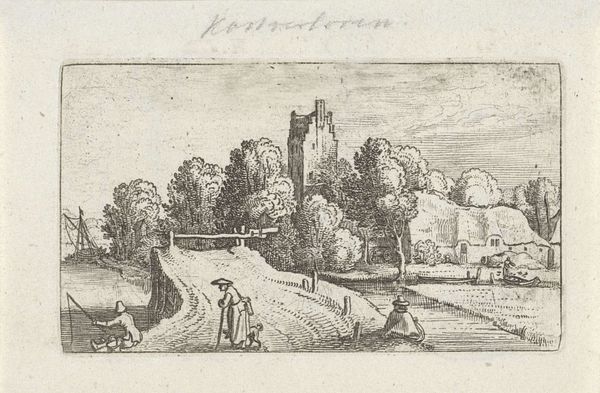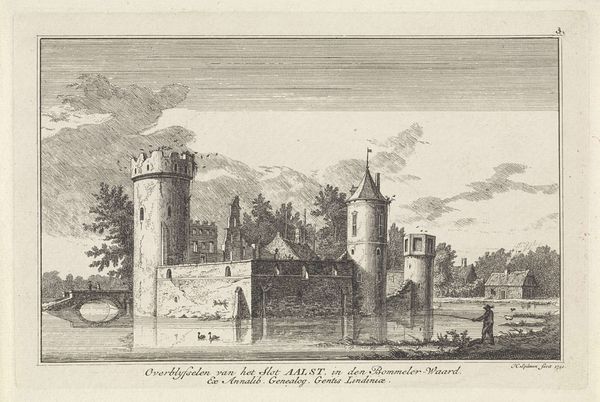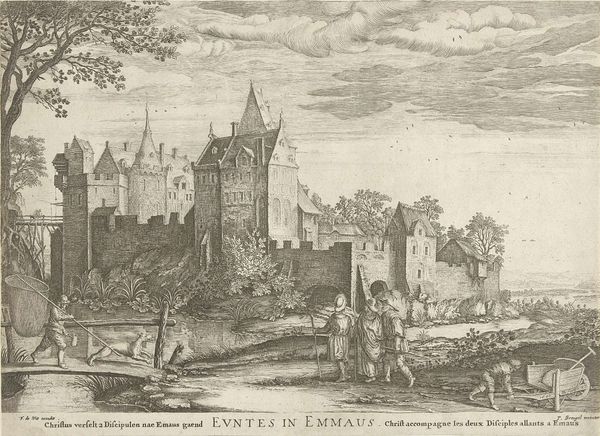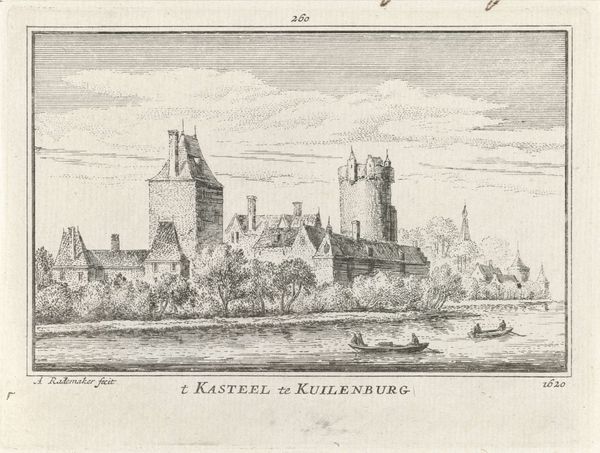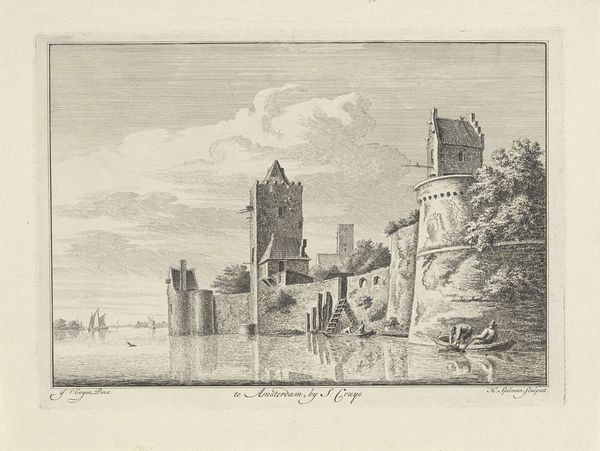
drawing, print, engraving
#
drawing
#
baroque
#
dutch-golden-age
# print
#
landscape
#
engraving
Dimensions: height 80 mm, width 115 mm
Copyright: Rijks Museum: Open Domain
Curator: This is "View of the Ruins of Huis ter Mey," a print by Abraham Rademaker, likely created between 1727 and 1733. It's an engraving, currently held at the Rijksmuseum. Editor: Well, that’s…cheery. A stately ruin reflected in still water, like a melancholy poem. Curator: The ruin itself is the core symbol. Buildings, particularly defensive structures like this tower, represent power, order. Their ruin, however, speaks to the passage of time, the impermanence of even the most imposing constructs. It can suggest the futility of ambition, the decline of civilizations…or perhaps simply a shift in cultural values. Editor: A very baroque memento mori! Although, look closely; there's a whole bustling scene happening. People fishing, boats on the water. Life continues, practically indifferent to the crumbling tower. It's kind of humorous when you think about it. Curator: Yes, and the surrounding landscape contributes to the layered symbolism. The water might symbolize purification or reflection, inviting contemplation on mortality. The trees, though perhaps suggesting the natural cycle of growth and decay, also stand for resilience as nature reclaims what’s been lost. Note that artist signed "Rademaker fecit." That word comes from Latin "he made this". It declares his intent. Editor: Definitely reclamation going on here! I can almost feel the damp air and the stubborn resilience of life itself. Though there are people busying about, one has the impression of the solitary quiet that such a place offers…the very whisper of history and how humans come and go, the landscape remains to tell tales. Curator: It's also significant that the print is titled "after" the location of Leydorp. This highlights Rademaker's role as an interpreter, not necessarily a documentarian. His choice to focus on the ruin shapes how the landscape and its history are perceived and remembered. Editor: Right. It’s not about geographic accuracy; it’s about distilling a feeling, an atmosphere, a pondering. Well, if one must contemplate decay, might as well find a lovely view. It’s almost life-affirming in an odd way, even if morbidly so. Curator: Perhaps seeing evidence of loss allows us to appreciate what endures. The ruins here become not just symbols of the past, but vital participants in the landscape’s ongoing narrative.
Comments
No comments
Be the first to comment and join the conversation on the ultimate creative platform.
